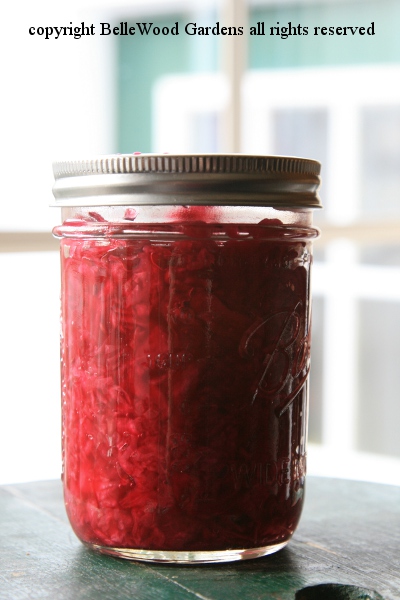
.
If you have any comments, observations, or questions about what you read here, remember you can always Contact Me
All content included on this site such as text, graphics and images is protected by U.S and international copyright law.
The compilation of all content on this site is the exclusive property of the site copyright holder.
Strawberries in December. Asparagus in August. Fruit from South America with more frequent flyer miles than have I. Today that's the new norm. And when the power goes out for more than a brief while we panic over the possible spoilage of refrigerator and freezer contents. But once upon a time to all things there was a season. And before refrigeration, prior to frozen foods, and without relatively inexpensive transport from warmer areas became readily available winter produce was limited to simple root cellar storage of sturdy vegetables such as carrots and potatoes. Other preserved foods provided a necessary source of nutrients during the winter. Enter sauerkraut!
My friend Peter is a sauerkraut meister. He's champion at turning cabbage
into something to salivate over. Insisting that it is easy, he enticed me with

a pint of his glowing ruby red sauerkraut.
The luscious color comes from blending both green and red cabbage.
He makes his sauerkraut about once a month, two gallons at a time.
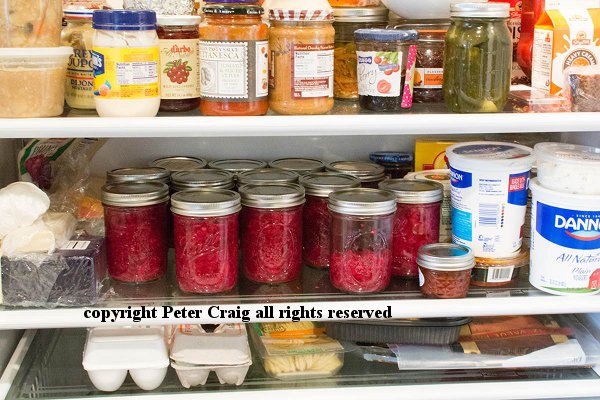
Which provides a yield of 13 1/2 pints.
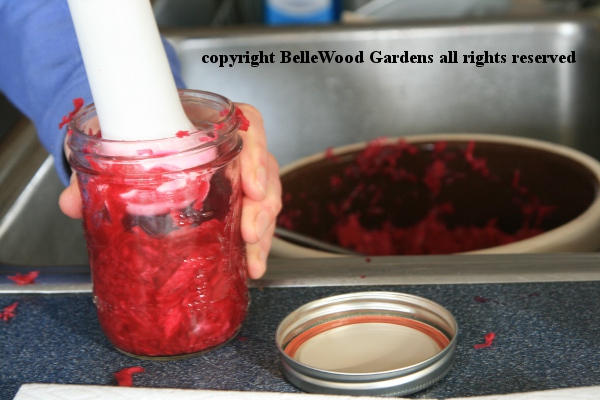
Sauerkraut is a matter of slicing, salting, tamping, waiting, bottling, tamping
- and enjoying. Not only is it delicious, it is very healthful.
It's like this. Good, beneficial, healthful bacteria are present on the surface of the cabbage. One of those bacteria, lactobacillus, is the same bacteria found in yogurt. When submerged in a brine, the bacteria begin to convert sugars in the cabbage into lactic acid; this is a natural preservative that inhibits the growth of harmful bacteria. So sauerkraut is made by a process called lacto-fermentation and contains a lot of the same healthy probiotics as yogurt.
Lacto-fermentation has been used for centuries - Chinese sauerkraut made from shredded cabbage fermented in rice wine was eaten by workers who built the Great Wall 2,000 years ago. Then, 1,000 years later, Genghis Kahn likely introduced the fermented cabbage from the Orient into eastern Europe, and from there it went to Germany and France. The German iteration used shredded, salted cabbage as a means to preserve this seasonal vegetable.
At its most basic, sauerkraut is made from shredded cabbage and a smidge of salt. It can be flavored with caraway seed or juniper berries. Some recipes add green apple, chopped. Or slivered carrots. Beets.
Having watched, back in January, as Peter bottled his beautiful green with red cabbage sauerkraut, today I'm invited to watch the new stuff being made. This is an interesting Immunity-Boosting Winter Sauerkraut recipe that he found on-line at Mountain Feed and Farm Supply.
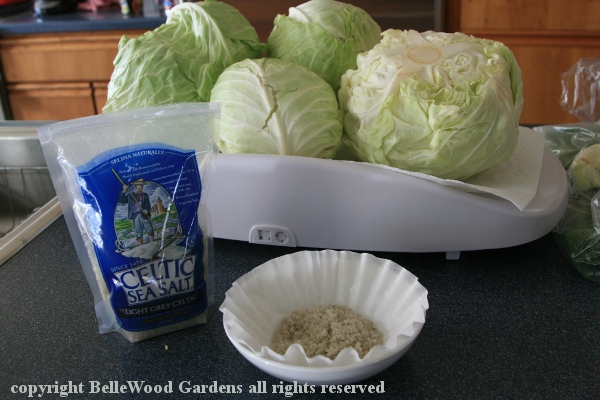
It begins, of course with cabbage and salt, approximately 7 kilos of cabbage. Peter is multiplying the original recipe by six, to fill a two gallon crock. Thus upping it to 4 Tablespoons Celtic sea salt. I should mention that Peter prefers to weigh his salt rather than use volume as the measurement system. That is more accurate.
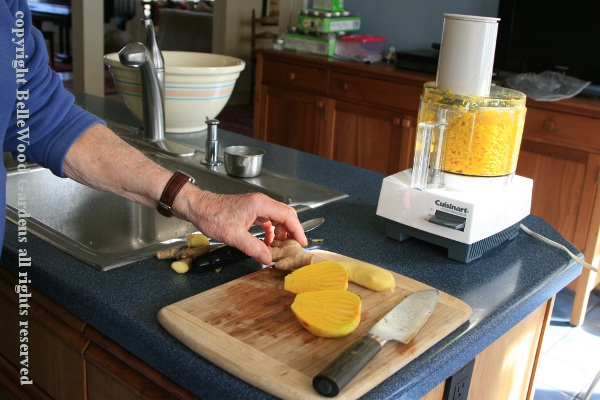
Next, 3 cups of shredded golden beets and 2 Tablespoons of minced ginger,
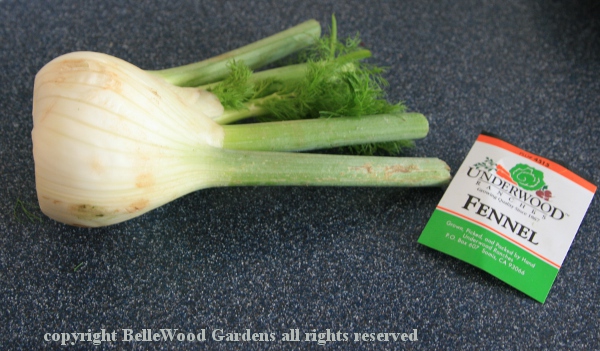
Three cups of thinly sliced fennel bulbs.
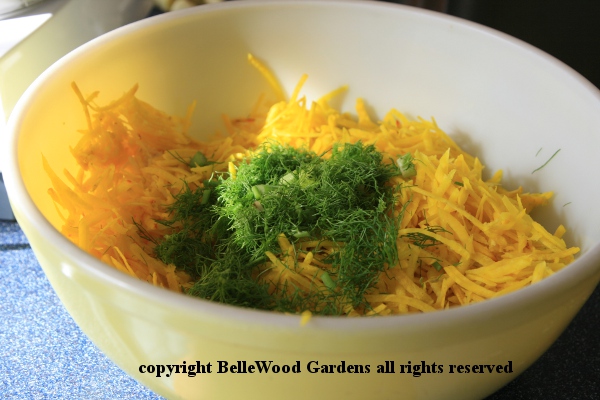
And a few fennel fronds, chopped.
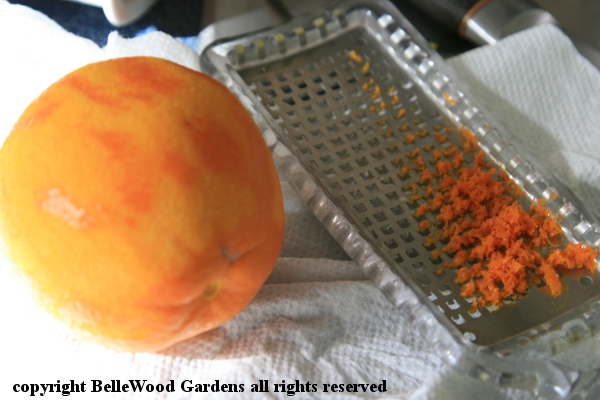
Zest and juice of a small orange - we didn't go 6 times on the orange. Or on the turmeric, kept that at 2 Tablespoons, just double the original recipe, and 4 fat cloves of garlic, minced (seemed like enough to both of us.)
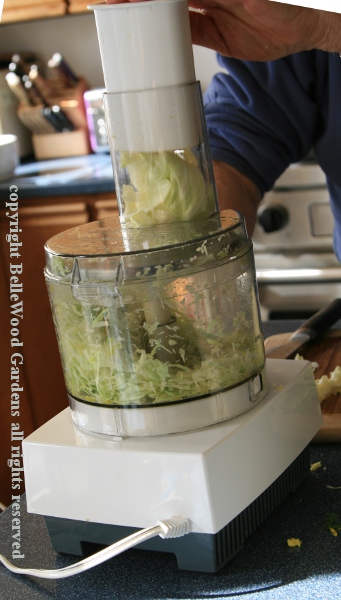
And now to shred the cabbage! Food processor does nicely - cut cabbage into quarters, remove core, slice thinly enough to fit through the feeding tube, and shred away. Imagine what it must have been like to do 50 or 60 pounds of cabbage by hand . . . .
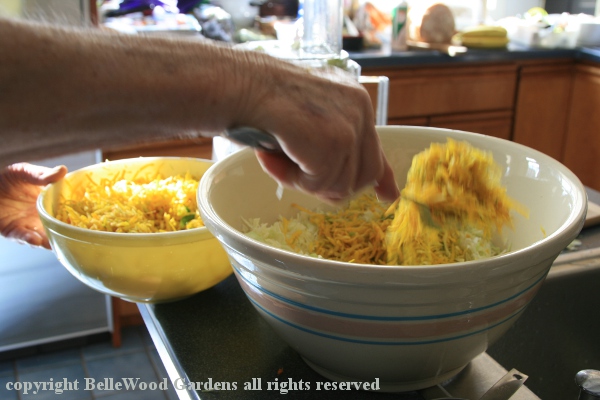
Shred some cabbage. Add a layer of the beet stuff. Mix together.
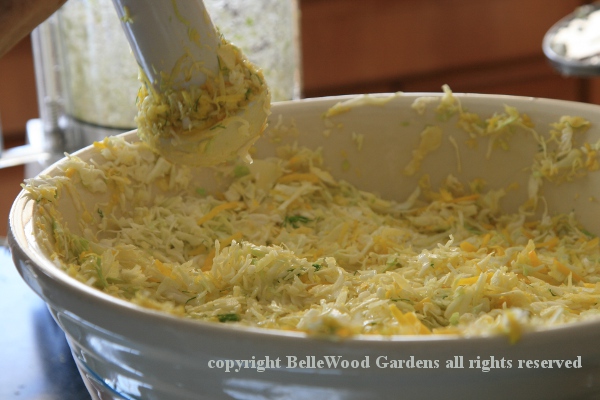
Then tamp, tamp, tamp to start the brine flowing.
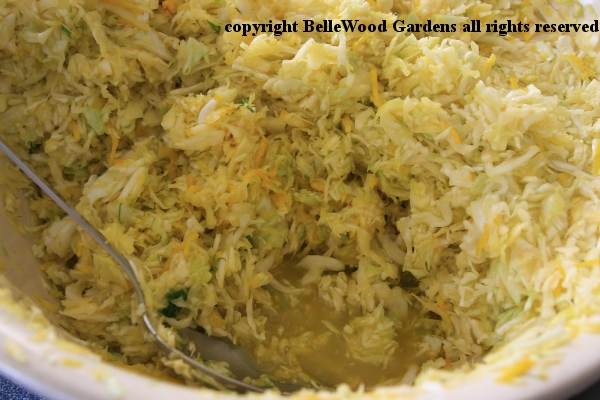
Very important as you want the to-be-sauerkraut covered with brine to exclude air.
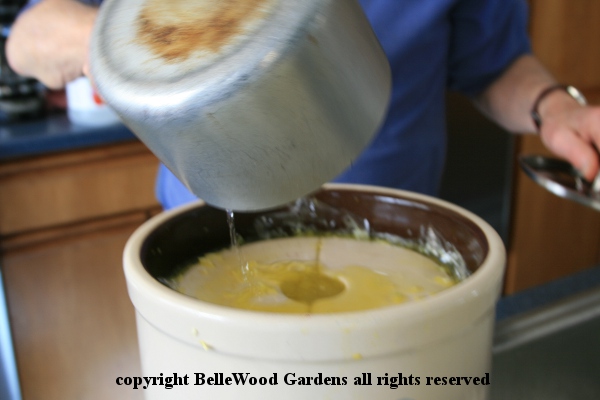
Once all the cabbage is shredded and salted then layered with beet stuff and tamped, tamped, tamped, into the crock it goes. Tamped again. There's not quite enough brine to cover the vegetables. But Peter had forethoughtfully made some salt water brine, boiled and then cooled. So the proto-sauerkraut is tamped, covered with plastic wrap, weighted down with the crock weights, and brine added to cover.
The fermentation process itself is very reliable and safe. At this time of year it will take three to four weeks. Be sure to come back for an update on the delicious, nutritious, healthful results.
Back to Top
Back to February 2016
Back to the main Diary Page